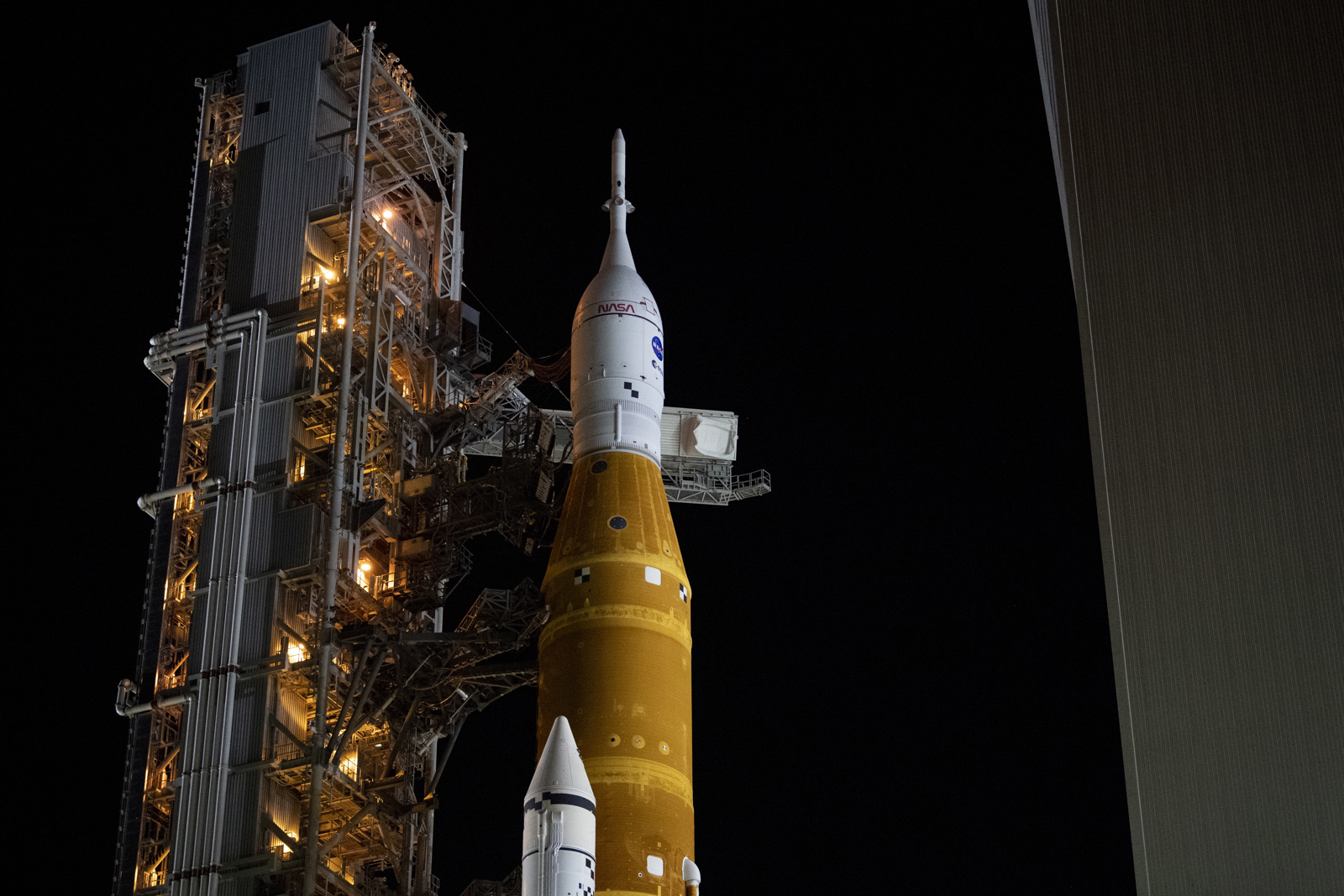Artemis I mission rocket reaches launch pad
- August 17, 2022
- 0
Photo: EFE/EPA/Joel Kowsky The giant rocket of the historic unmanned mission Artemis I arrived Wednesday morning at the Cape Canaveral, Florida (USA) launch pad, where it will set
Photo: EFE/EPA/Joel Kowsky The giant rocket of the historic unmanned mission Artemis I arrived Wednesday morning at the Cape Canaveral, Florida (USA) launch pad, where it will set


The giant rocket of the historic unmanned mission Artemis I arrived Wednesday morning at the Cape Canaveral, Florida (USA) launch pad, where it will set off for the Moon on August 29.
The Space Launch System (SLS) rocket and its apex Orion spacecraft arrived at Kennedy Space Center platform 39B around 7:30 am local time (11:30 GMT) after an approximate transfer from the Florida complex’s assembly hangar. ten hours.
On a large dolly called Crawler-Transporter 2, the 322-foot (98-meter) rocket and the 26-foot (8-meter) spacecraft made the 4-mile (6.4-kilometer) journey between the two locations at a speed. miles per hour (1.6 km/h).
“In the coming days, engineers and technicians will configure the systems on the platform for launch,” NASA said on a blog dedicated to the Artemis program on Wednesday, after the rocket took off from the Vehicle Assembly Building (VAB, in English) around 21: Tuesday at 30 local time (Wednesday 1:01). 30 GMT).
The move comes after NASA engineers and technicians successfully completed tests of the “flight termination system” designed to destroy the rocket in an emergency last week.
The US space agency is maintaining a tentative takeoff date for the Artemis I mission, which will travel to the Moon, orbit and return to Earth 42 days after launch, for the morning of August 29.
Until its scheduled return on October 10 in the waters of the Pacific Ocean off the coast of San Diego, California (USA), the Orion spacecraft will have covered approximately 1.3 million miles (2.1 million kilometers) during this remaining mission. in space and longer than any other spacecraft without docking to a station.
“This first Artemis mission will demonstrate the performance of both the Orion and the SLS rocket, and will test our ability to orbit the Moon and return to Earth. The flight will pave the way for future missions to the lunar region, NASA says on this space program’s website.” he explains.
In 2024, the Artemis II mission is expected to do the same route, but with a crew already on board, in 2025 NASA plans to take astronauts to the Moon with Artemis III, the first NASA mission to transport humans to the Earth satellite. more than half a century ago.
The last mission NASA astronauts set foot on the Moon was Apollo 17, which took place from December 7 to December 19, 1972.
see more images #Artemis joyful @NASA_SLS rocket and @NASA_Orion when the spacecraft arrived at Launch Pad 39B this morning. 📷➡️ https://t.co/cTEfEpR4DT pic.twitter.com/MQUci1Tv6Q
— NASA HQ PHOTO (@nasahqphoto) 17 August 2022
Source: El Nacional
Alice Smith is a seasoned journalist and writer for Div Bracket. She has a keen sense of what’s important and is always on top of the latest trends. Alice provides in-depth coverage of the most talked-about news stories, delivering insightful and thought-provoking articles that keep her readers informed and engaged.